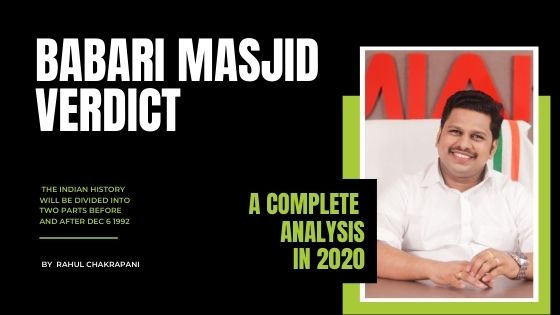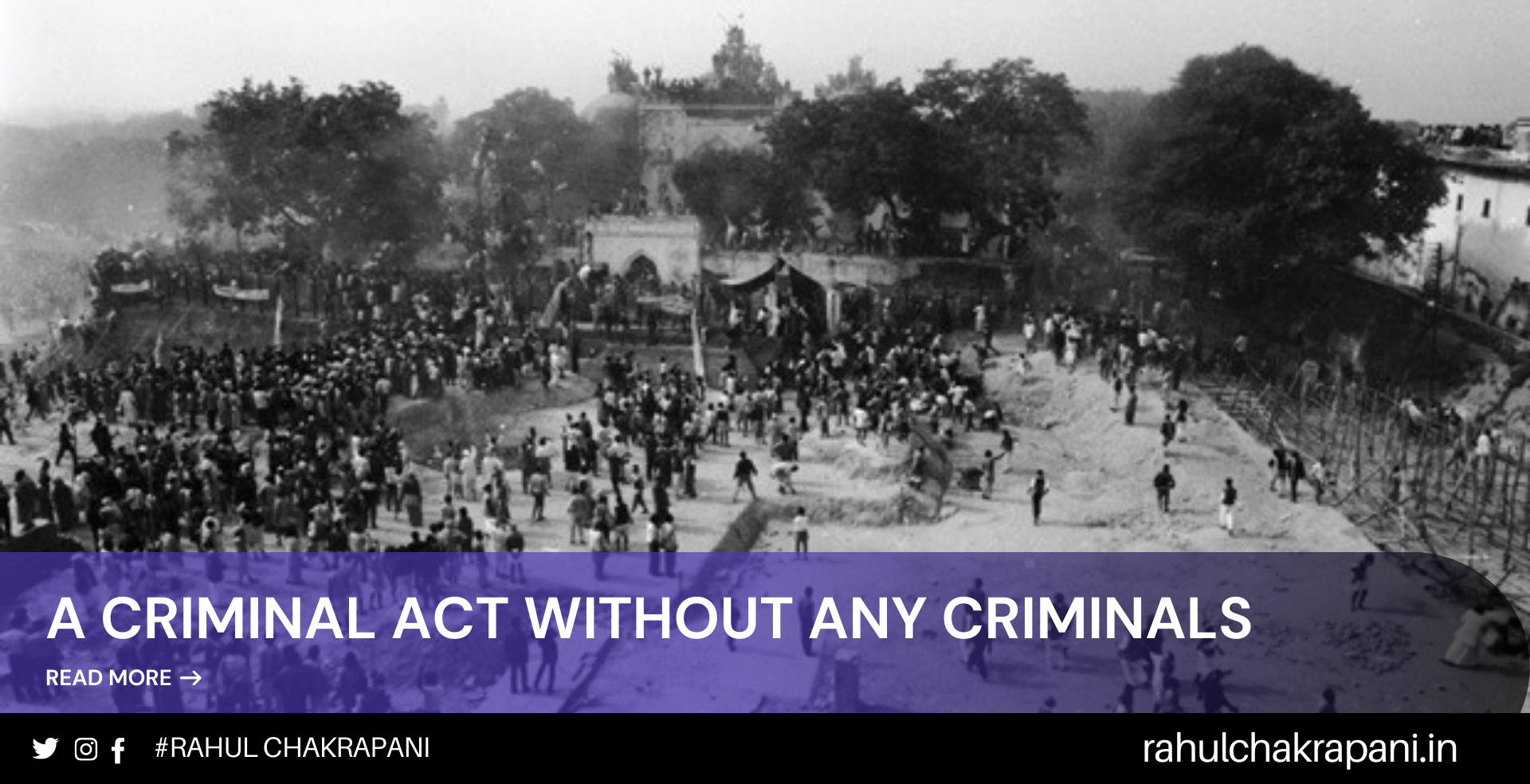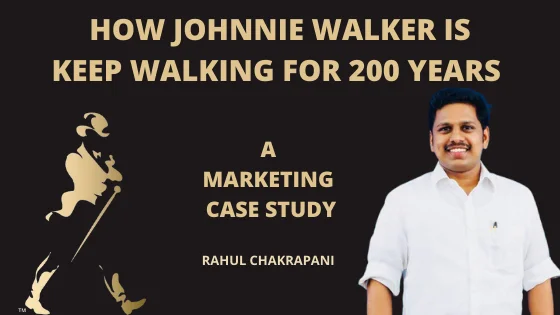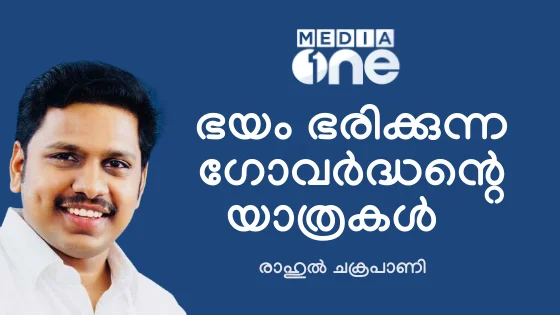Ayodhya: The Justice and Dividends A complete Analysis By Rahul Chakrapani
Mandir” from masjid “ or”Masjid” from “Mandir” this chatter is going on in India for a while now.
after reading this article from Rahul chakrapani, you should not be in doubt anymore in this case,
Why is this Ayodhya dispute so lengthy and complicated?
The history of this case is nearly 500 years old which starts from 1528
So
if the question is about the ownership right and title of this land,
so from which date should consider this right from 1528 when Babari Masjid was built.
Or
from 1949 when Shri Ram’s statue was kept there
Or
from 1992 when Babri masjid was demolished
Then
What was the decision of the Allahabad court?
Why was that decision not accepted?
What was mentioned in the report of the Archaeological Survey of India (ASI)?
Why did mediation fail?
The three parties related to this case,
What evidence do they have and according to that evidence what are their demands?
By keeping all the emotions and faith beside,
The 2nd longest case in the history of the Supreme Court ever
After 40 days of hearing, What will be the effect of this case decision?
“Ayodhya” dispute by which you will know about the seriousness and the decision of the Supreme Court on this matter?
Babari masjid back story
Hindu peoples sayings were different so as the Muslims, apart from this what is the story being we will look that In 1528 the commander of Babar, Mir Baqi built Babri Masjid
The belief of local peoples of that place was that Masjid is Built after demolishing Ram Mandir over there and because of this the first Riots happens between Hindus and Muslims between 1853 to 1859
To stop this Riots, the British Government comes around And they say that,
we will divide this area into two different parts
the inside portion of that area will be used by Muslims
the outside portion will be used by Hindus
after stating this they do fencing of that area
After that in 1885 for the first time, this matter went to court, when Mahant Raghubir Das demanded building the roof on the outer side for puja and worship.
after the independence of India
Now let us see what has happened after the independence
the first very imp date is 23 December 1949,
when on the main part of the Masjid Lord Ram’s Statue was placed
so now Hindus started worshipping on that part of the land also,
once again the situation got tensed
For controlling the situation, the government of India closes that whole area,
put complete ban over there neither Hindus can enter nor Muslims,
so for removal of this governmental ban, many civil cases get filed like in 1950- Mahant Ram Chandra Das filed a case for Right to Worship for Hindus
in 1959 Nirmohi Akhara files a case saying that the possession of that area should be handed to them
After two years of this in 1961, Sunni Waqf Board also files a case saying that the ownership of that place (Babri Masjid) should be given to them
all the discussions are not done in court,
outside the court what different religious were preparing
Vishwa Hindu Parishad formed a committee for building Ram Mandir and by this time the cases filed for the removal of the governmental ban,
The results were also coming by that time One such result came in 1986,
when Faizabad court allowed Hindus to worship on that place
Angry on this decision Muslims formed a committee for themselves Babri Masjid action committee
after that, in 1989 another case was filed
named ” Ram Lalla Virajman ” They also wanted the ownership right, whole possession of that land
now the situation was getting tensed day by day
In 1990 Minister Lal Krishna Advani starts a Rath Yatra from Somnath of Gujarat to Uttar Pradesh
The result of this act was very dramatic,
the situation got more tensed, Riots begins all over and Mr Advani got arrested in Bihar,
Lal Krishna Advani was the senior leader of BJP
so opposing the arrest of Advani, BJP took back their support from the VP Singh government after that in 1991,
looking at the tensed situation and to stop the riots, like the British government,
Kalyan Singh government of Uttar Pradesh comes around and take that land under their control
The 1990s division of India
Next important date is 6th December 1992,
when thousands of kar Sevak moved to Ayodhya and demolished Babri Masjid and at the same place they built a temporary Ram Mandir
After this incident, the whole of India was suffering from Riots
16th December 1992 about the matter of demolition of the masjid
who was responsible and to look after the situation Liberhan Committee was appointed At that time,
in Center, there was Narsimha Rao’s congress government
so the proposal of Congress government was at that disputed land of Ayodhya,
A Ram Mandir, A Masjid, library and A museum and other facilities should be provided This proposal of the congress was strongly opposed by BJP
so now we come to 2002,
when there was BJP government in centre Prime Minister Shri Atal Bihari Vajpayee started an Ayodhya Vibhag
whose main objective was a resolution by talking to Hindus and Muslims and come towards solution In April 2002,
for deciding the ownership right of that land a bench of 3 judges constituted at Allahbad court
The 3 judges were Justice Sudhir Agrawal, Justice S U Khan and Justice D V Sharma
For the hearing of the case, Allahabad High Court tells Archaeological Survey of India to investigate that land and tells to submit a report on that
ASI’s report claims that they found evidence of Mandir under the surface of Masjid and that found temple was of 12th Century so according to the report of ASI
a timeline creates that at the 12th century at this area only a temple was there
and in 1528 on the same area, a Masjid was built,
and time period of 300 years between there is no evidence for that
but
if we connect the dots we will see that in the 12th century there was a temple and in 1528 there was a Mosque
and if we listen to the local peoples, the Masjid was built after demolishing the temple
only So this was ASI’s report after considering all the reports and evidence,
the Lucknow bench of Allahabad High court on 30th September 2010, delivered a historic judgement
They divided the whole disputed area into 3 parts
the first part of Ram Murti was given to Ram Lalla Virajman
the second part, Seeta Rasoi, Bhandara and Ram Chabutra was given to Nirmohi Akhara and the remaining
hird part was given to Sunni Waqf Board On 9 May 2011
the supreme court put a stay on the decision of the Allahabad court On Feb 2016
for the Nirman of Ram Mandir Subramanian Swamy filed a case in Supreme court
on March 2017 the Chief Justice of Supreme court Justice JS khehar advised solving this dispute outside the court
by a discussion between related parties Till December 2017,
there were 32 appeals in Supreme Court against the decision of Allahabad court
Supreme court said the hearing of this case will start from January 2019
For the hearing of this case, Supreme Court composed a bench in which there were 5 judges,
Justice Ranjan Gogoi,
Justice Sharad Arvind Bobde
Justice D.Y. Chandrachud,
Justice Ashok Bhushan
Justice Abdul Nazeer
on 8 March 2019
on this dispute Supreme court says to settle it by a Mediation Panel regulated by the court on May 2019 mediation panel submits their final reports in the court
after that in Supreme court, 40 days of hearing goes on from 6th August to 14 October After the hearing Supreme Court reserves its Judgment
but it tells to the parties to submit Moulding of Relief
Moulding of Relief means whichever party has asked for their claims,
if in case the supreme court doesn’t deliver that so in that case court asks them to submit what they want in alternative to that
now let’s know about the Arguments of the three parties
Sushil Kumar Jain represented Nirmohi Akhara,
Sunni Waqf Board was represented by Rajiv Dhavan
and Ram Lalla Virajman was represented by CS Vaidyanathan
One by one we will see that what were the issues and main responses of these three parties
Nirmhi Akhara was saying that possession of Inner Courtyard yard from 1934 should be given to them But they didn’t have any document to prove their demands that from 1934 they only had the possession of that area
while representing Sunni Waqf Board Rajiv Dhavan said that On December 6, 1992, on that place there was Masjid on that area and this fact should only be considered in 1949 in the middle of the night
Ram murti was placed on the Masjid which was an illegal act and from this illegal act no other party should be benefited from this
Sunni Waqf Board said that in Ram Chabutra Hindu people worship and It is the birthplace of Lord Ram and they don’t have any problem Hindu people worshipping in Ram Chabutra but the inner courtyard belongs to them and should get them only
CS Vaidyanathan said that there was only Ram mandir since from the beginning and Babri Masjid was built after demolishing the temple
he also said that from 1949 when the murti was placed since then the area was in their possession and Muslims or Sunni Waqf Board doesn’t have any exclusive possession on that place
he stressed on ASI’s report and said that in the slabs and pillars of Babri Masjid, Hindu motives and scriptures were found which indicates that there was Ram mandir here before
After hearing the arguments of the three parties,
Supreme court said that based on the talking’s of people or based on the report of ASI,
any lands ownership right cant be decided the title of the land is decided based on the legal principles and proper evidences and
the evidence clearly shows that being a Masjid over there,
Hindus were never being stopped to worship there
Along with this commenting on the decision of Allahabad High Court,
The Supreme Court said that the decision of Allahabad court of dividing that land into three parts was an unsustainable decision and it was a wrong relief.
Why?
Because this relief was never being asked by any party so Supreme court said that the judgement of Allahabad court was wrong
After this Supreme Court said that, the majority of this case is based on historical facts and figures
by relying on the probabilities it is clear that from 1857 Hindus were worshipping in the outer place of that area
by which their control being established’ Court also said that the stay on the Muslims for doing Namaaz over there was from 23 December 1949,
It means from that date when the murti was placed in the Masjid by which in their 400-year-old masjid Muslims right to worship got deprived
Then the Supreme Court used its power of the constitution’s Article 142.
whichever mistakes has been made it corrects that and gives a final decision
And said that the land of Babri Masjid means 2.77 acres of land will go to Ram Lalla Virajman
and from Central Government or State government Sunni Waqf Board will be given 5 acres of land Both the parties will get their allotted land
on the same day, the only History has always witnessed that,
in any court case, both parties have never been satisfied with the court’s decision
while coming out
that’s why Shri Atal Bihari Vajpayee, Justice kehar, Supreme court Bench and all other peoples wanted that this dispute should be solved by the mediation or mutual understanding
Because of all other tries were not successful,
that’s why Supreme Court has to Interfere in this case And what is the effect and reaction of this decision of Supreme Court
where we are now
The Supreme Court has finally given its verdict on the Ayodhya issue after ages
The issue of Babri Masjid and Ram Mandir had been ongoing for ages In 2010,
the High Court had pronounced its verdict by saying that the land should be divided into three parts,
but no one agreed This case then went to the Supreme Court which has given its judgement almost 10 years later that both the Mandir and the Masjid will be constructed
The disputed area of 2.77 acres The Supreme Court said a Mandir should be constructed there
The Supreme Court has handed over this land to the central government can appoint a trust which will then look into the construction of the Mandir
The supreme court also said that the Sunni Waqf board should be provided with a 5-acre land somewhere by the central government for the Masjid They can then construct a Masjid there
This was to satisfy both the parties and allow them to construct both a Mandir and a Masjid
A Mandir is to be constructed at the disputed site and the Masjid can be made elsewhere
Hence the Masjid is to be allotted a bigger space
The Supreme Court has also said that the demolition of the Babri Masjid in 1992 was a serious violation of the law
But the Supreme Court has not pronounced any judgement against them because this judgement was that of a civil dispute and not that of a criminal case
It is very likely that separate criminal proceedings will be pursued against them Was the verdict of the Supreme Court right or wrong?
In my opinion,
this was an ideal verdict in a case where decision making is extremely difficult If you think from the perspective of the judge of the supreme court
then decision making, in this case, was almost impossible because
in normal Court cases you have to think what is right and what is wrong legally
But in this court case,
you have to keep in mind the beliefs of the people
You also have to keep in mind what is right factually and historically
Because the Supreme Court has written in its judgement that historically,
there was indeed a structure beneath the Babri Masjid There was indeed and an un-Islamic structure beneath the Babri Masjid
but it could not be proved that it was actually a Mandir
You also have to keep in mind the impact of your decision upon the people I think,
factually,
morally,
ethically,
historically,
More important than these is what the consequences of your decision will be It might be so that you take a factually correct decision here
But if your decision leads to riots in the country, then would it actually be a right decision?
How to take a correct decision that would maintain peace in the country,
that boosts communal harmony among the people of the country and fosters Unity and at the same time it should be legally and factually correct
So you can see how difficult it is to keep things balance here, Therefore,
I have a lot of respect for the judges of the supreme court who took such a huge decision in such a calculated manage
Some people could allege that this was a majoritarian decision
This imposes the views of the majority upon the minority but
I do not believe so My belief is that the majority of the population was not even interested in this issue
Most of the people in our country are indifferent to whether a Mandir or Masjid is constructed
They are more affected by the fact
whether they are getting jobs or not. Is the air clean or not?
How are the roads constructed?
How are the government schools and hospitals built?
My belief is,
no matter what the media shows you,
in my opinion,
the people are more affected by actually issues At the same time, the majority of the population is indeed affected by the side effects of the Ayodhya verdict
It may not matter whether a mandir or a masjid is constructed, but, but if a verdict was pronounced in the Ayodhya issue that would lead to riots in the country,
then majority of the people start to get affected and that should indeed be so It should then indeed have an effect on them Hence, to take a decision that takes its consequences into account which would be the most peaceful decision,
and it secures India’s unity and secularism for its future That was of utmost importance here
This is good news for our country that most of the people irrespective of whether they were Hindus or Muslims have peacefully accepted this decision And I believe this decision is a lesson for our young generation
Which shows us how much money, how much time and how much energy was wasted collectively by our country regarding this one issue Sometimes,
it so seemed that this Ram Mandir issue was the most important issue in our country Lacs and crores of hours were wasted by our TV channels on discussions on this issue and conducting debates on it daily
So much time of the people has wasted The Supreme Court conducted its hearings for 40 days This was the second-longest hearing in the history of Supreme Court It is a judgement of a 1000 pages Now,
some journalists would waste their time reading this 1000 page judgement They would pick up some points and criticise them and then there would be a discussion on them Some people would want to file a review petition against it
Endless This issue can run on endlessly But it is up to us to end it right here The people should say that “it is enough” after this judgement
This issue has now ended here and now, let’s talk upon issues of importance Think about it,
the lakhs and crores of hours (spent) by the media instead of talking about the Ram Mandir, would have discussed economic and environmental issues,
the people of our country would have been so much more aware of issues like these They would have been so much more educated And
our country could have progressed leaps and bounds 2020 is round the corner There were talks about a “superpower 2020”, twenty years earlier Look at the condition of the various issues in our country
Why should I waste time reading and researching upon such issues?
I would prefer to use my time in reading on issues like
environment conservation,
urban planning,
economic theory,
sustainable development
That would also be of some use.
What would be my benefit or your benefit in researching upon issues like these?
It is of no consequence and only your time would be wasted
The data on farmer suicides has finally been revealed which was being withheld by the government since 2016
They have informed us that in 2016 there were 11,000 farmers suicides Moody’s has brought out its new ratings in which India’s economic outlook has been downgraded from “stable” to “negative”
There are a lot of issues that can actually have an effect on you and we will talk about it.








